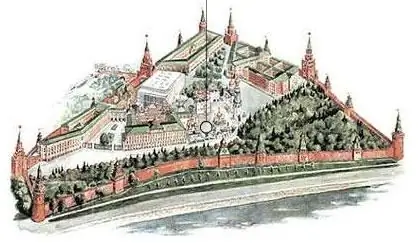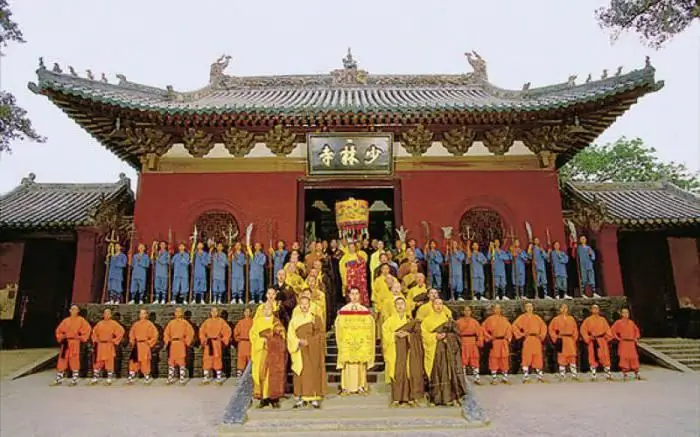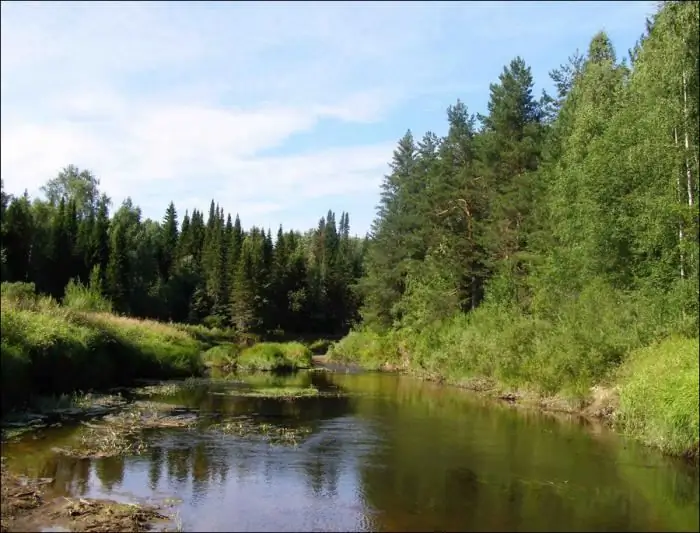- Author Harold Hamphrey [email protected].
- Public 2023-12-17 10:06.
- Last modified 2025-01-24 11:10.
The city of Nizhny Novgorod has an ancient history, founded in 1221. During the period of the USSR (from 1932 to 1990) it was called Gorky. The city is located in the central part of the East European Plain, at the place where two great rivers, the Oka and the Volga, join.
Nizhny Novgorod is divided into the left-bank and right-bank sides by the Oka River, conventionally they are called the upland and riverside parts. And the Volga river separates the city from the Bor district. In the central part, many sights have been preserved, and one of them is the well-known Nizhny Novgorod square called Minin and Pozharsky.

General characteristics
The square is located in the central part of the city and connects several streets together:
- Verkhne-Volzhskaya embankment;
- Minina;
- Bolshaya Pokrovskaya;
- Barbarian;
- Zelensky congress;
- Ulyanov.
The central square of Nizhny Novgorod is located in the southeast of the upland part of the historicalmemorable place - the Kremlin. There are many historical monuments, unique buildings and city fountains on the street itself. Ceremonial city events are held on the square, and traffic is blocked on public holidays.

History
Minin and Pozharsky Square in Nizhny Novgorod originally had a different name - Verkhneposadskaya, then Verkhnebazaarnaya. The name was so because all the overland routes of the settlement converged here, and the market was located here, which fully satisfied the needs of the inhabitants of the upper part of the city.
As soon as the stone Cathedral of the Annunciation appeared here (before that there was a wooden church), in 1697, the square was already called Blagoveshchenskaya.
The plan for the regular development of this part of the city appeared only in 1770. Until that time, people randomly built up free territories near the Dmitrievskaya Tower of the Kremlin with their houses. A plan was drawn up at the request of the provincial authorities in the St. Petersburg "Commission on the structure", from 1768. According to the document, the square was supposed to have a trapezoidal shape, and all the houses adjacent to it were supposed to be stone, including those that would be located on the adjacent streets.
The beginning of the reconstruction of the square started only 9 years later, in 1779. On the adjacent streets, wooden buildings were demolished and stone ones began to be erected. But, private houses on the side parts of the so-called trapezium of the square were not demolished, but they were not allowed to be repaired until the beginning of the 19th century, so that in the future,due to unsuitability, dismantle.
Soviet period
After the arrival of the communists, in 1917, two adjacent squares were merged:
- Annunciation;
- Seminar.
It turned out to be a modern square in Nizhny Novgorod, but with a completely different name - Sovetskaya.
The Annunciation Cathedral and the Church of St. Alexei the Metropolitan were badly damaged, all the utensils were stolen, and shopkeepers were housed inside. As a result, in the 30s, two shrines were demolished. They even demolished the monument to Alexander II, which was erected literally on the eve of the start of the revolution.
In the period from 1935 to 1937. a new building plan was developed. It was supposed to change the shape to a radial one, by demolishing part of the towers and walls of the Kremlin. But these plans could not be realized: the Second World War began.

The appearance of the monument to Minin Kuzma
In the midst of the war, in 1943, it was decided to erect a monument to Minin Kuzma on the square. The purpose of this project was to raise the morale of the local population. The monument stood until 1985. In the same year, it was handed over to restorers in the village of Balakhna.
The new monument to Minin on the main square of Nizhny Novgorod appeared only in 1989. It was created by a whole team of sculptors.

Modernity
As in the whole country, as soon as the Soviet Union collapsed, small architectural forms began to appear in the central parts of cities. The area was no exception. Minin in Nizhny Novgorod. Photos of that period are terrifying, all the beauty of architecture and monuments has faded. But with the advent of the 2000s, the stalls gradually began to disappear from the street.

Monuments and tourist spots
Naturally, the main attraction is the Nizhny Novgorod Kremlin. On the square are:
- bust of Minin Kuzma;
- a monument in the center of Kuzma Minin Street;
- monument to Valery Chkalov;
- sculpture of the Policeman (made of bronze).
On the square itself and in the immediate vicinity there are interesting places that you should definitely visit:
| Exhibition Complex | The building was built in 1841, and since 1974, an exhibition complex has been operating on the ground floor |
| A. S. Pushkin Museum | Despite the fact that the poet was only once in the city, and then passing through, a museum was opened in honor of this event. |
Also, the Kremlin houses an art museum, in the Dmitrov Tower. And the central architectural element of the square is the fountain, which was erected in 1847. At that time, it served as a source of water, since the upper tenement always felt a lack of drinking water. It was moved and restored several times in 1990 and 2007.
In 2009, the administration of Nizhny Novgorod considered a project for the reconstruction of the square. The document provided for the construction of an entertainment center under the street, andalso restoration of the lost monuments of architecture. What will happen next - time will tell.






